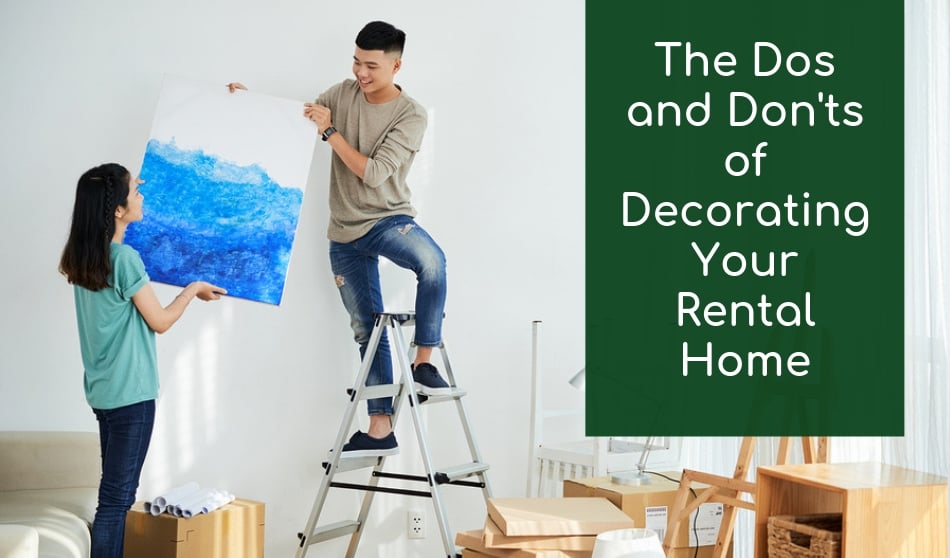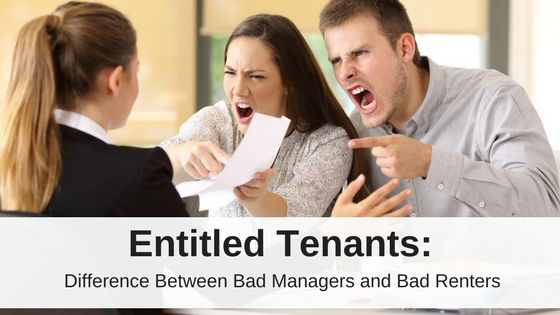 Making a rental property feel like home can be a challenging process.While you might be living in it and paying the rent, the structure still belongs to someone else. That means , as a renter, you are restricted in what you can reasonably do to change your surroundings.
Making a rental property feel like home can be a challenging process.While you might be living in it and paying the rent, the structure still belongs to someone else. That means , as a renter, you are restricted in what you can reasonably do to change your surroundings.
There are some landlords that will be happy when you make your space your own with new light fixtures and furnishings. However, there also landlords out there that won’t let you drill holes in the walls. After all, they didn’t spend a fortune on remodeling, only to do it all again when you move out.
So, how do you find the balance between letting your personality shine through in a rented property while keeping your landlord happy?
Find Out What You Can’t Do
First things first, you’ll need to know what your landlord allows in terms of decor. Your rental agreement should include plenty of information to guide you. For instance, some landlords will allow you to hang paintings on your walls using nails. However, they might limit the number of pieces you can put up. Most of the time, you’ll need to return your house to the owner in the same condition when you first moved in.
This means that you won’t be able to:
- Install permanent fixtures: There’s no point in paying for a new kitchen in a rented home. Your landlord may decide to take the property back or increase the rent, which forces you to look elsewhere. Leave significant changes until you own your own home.
- Change the outside: Painting the exterior of your house is just as dangerous as painting the interior. If you make big changes without the landlord’s approval, you may need to pay to have it changed back to its original state.
- Put up your wallpaper: You’ll need to strip it down again when the time comes for you to move. This means more expense and hard work to worry about in the long-run.
- Drill countless holes in the wall: Drill too many holes for shelves, paintings, and other added extras, and your landlord will be within their rights to ask you to pay for those holes to be fixed.
- Replace the flooring: If you don’t like the current flooring, then put a rug down instead. You won’t be able to take your expensive new flooring with you when you leave, and your landlord might even ask for you to replace the flooring if he or she doesn’t like it.
Most importantly, don’t think that you can get away with lying to your landlord and telling them that you’ve made fewer changes than you have. Remember that they can always perform an inspection.
Find Unique Ways to Spruce up Your Rented Home
Just because you’re limited in what you can do with a rental property, doesn’t mean that you don’t have any options. You might not be able to invest in new wallpaper and flooring, but you can still make your place your own with a little creativity.
Here are a few ways that you can update the look of your apartment, without upsetting your landlord.
1. Change your Window Treatments
If you’re not a fan of the plastic vertical blinds that your landlord provided, consider asking if you can change them. Most landlords won’t mind, as you’ll be paying for an upgrade to their property, and you probably won’t be able to take fitted blinds with you. If you can take your shades when you go, make sure that you keep the other blinds and re-install them before you leave.
On the other hand, you can always ask about adding curtains to your window instead. This can brighten up your room with new patterns and colours, without making too much of a substantial change.
2. Focus on Little Accessories
Sometimes, the smallest things can make the biggest difference to the way that your home looks and feels. For instance, plants give an instant dose of life to any living space. What’s more, your leafy friends can also make you feel happier and healthier.
Plants clean the air and give a fresh appearance to your home. There are plenty of other little accessories that you can consider too. For instance, how about some free-standing picture frames, candles, and other pieces you can place on tables and mantles?
3. Decorate your Walls with Caution
You will need to be extra careful when decorating the walls in a rental property. Fortunately, companies have begun to design options specifically for people who can’t leave a lasting mark. For instance, you could use removable wallpaper to create a feature wall for one of your rooms, and then simply get rid of the paper when it’s time to move.
Alternatively, you can try vinyl decals or stickers that you’ll be able to quickly scratch off before your tenancy comes to an end. There are even some that use removable tape to create wall accents. You can find great ideas for washi tape designs on Pinterest if you want to get extra creative. If you really want to splash out you could consider something like an electric fireplace but be careful about drilling too many holes as mentioned above.
4. Think Outside of the Box with Artwork
If you want to add photos and pictures to your walls, then why not try using self-adhesive removable hooks, instead of hammering nails into your walls? You’ll just need to check that the hooks you buy can handle the weight of the object you’ll be hanging. On the other hand, try block canvases propped up around your property instead. This way, you don’t need to hang anything at all.
If you’re looking for an interesting way to introduce more art into your home, consider a rug with a mural on it. This will draw attention to a focal point in your room, and show off your style, without harming your status as a great tenant.
5. Upgrade your Light Fixtures
Finally, have some fun with your lighting options. You can try a stunning lamp shade or use distinctive bulbs designs in your property to really tie the motif of your room together. What’s more, you can add some fairy lights draped around a piece of furniture to give your place a touch of sparkle and shine.
Make Your House a Home
There are plenty of opportunities to add style to your space – from flooring to lighting and everything in between. Remember, if you’re going to make a statement to make the place your own, make sure that it is something that you can remove or take with you when you decide to transfer to a different location.





